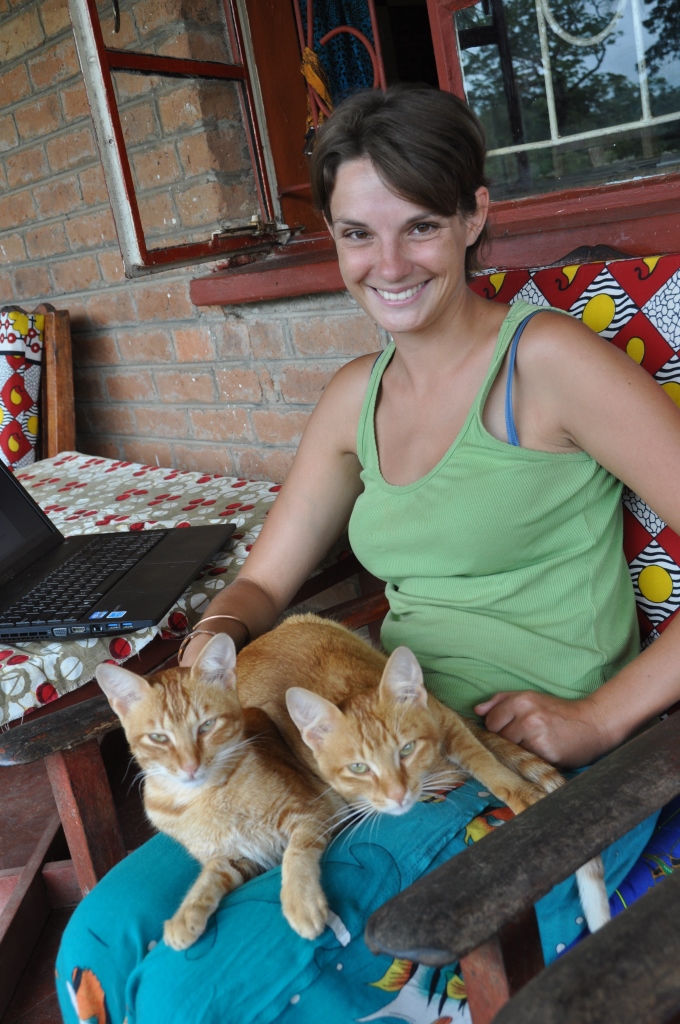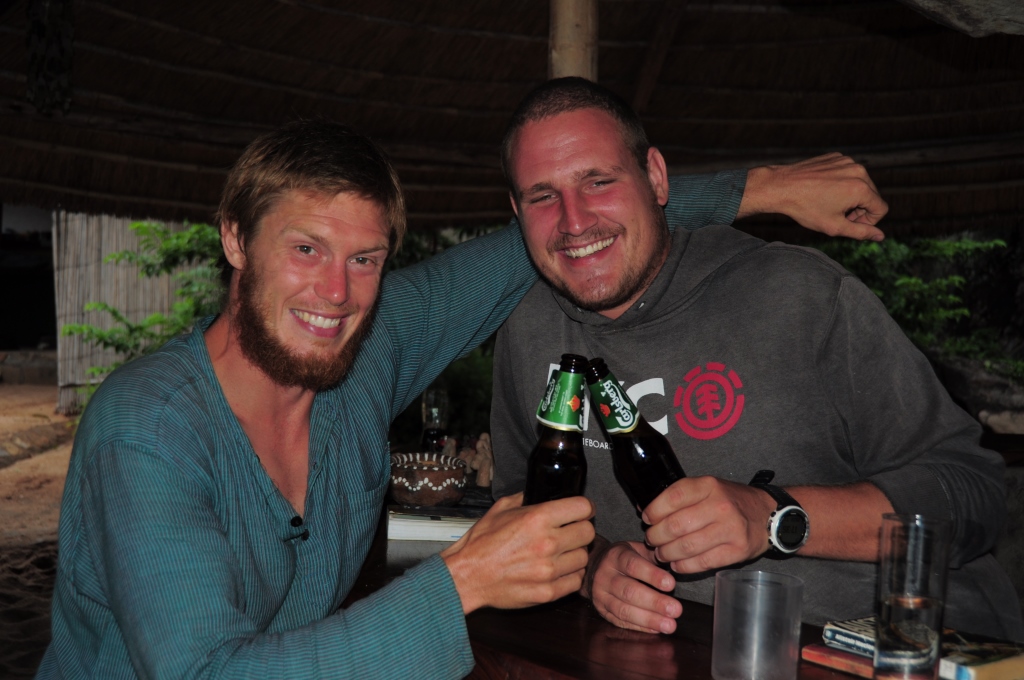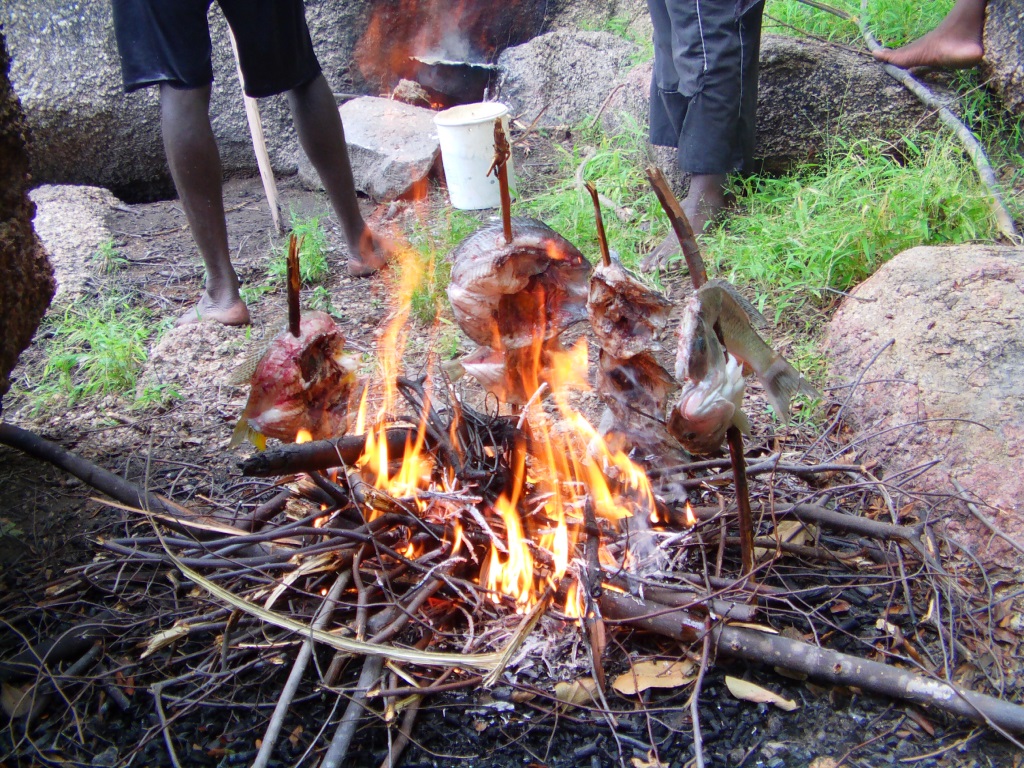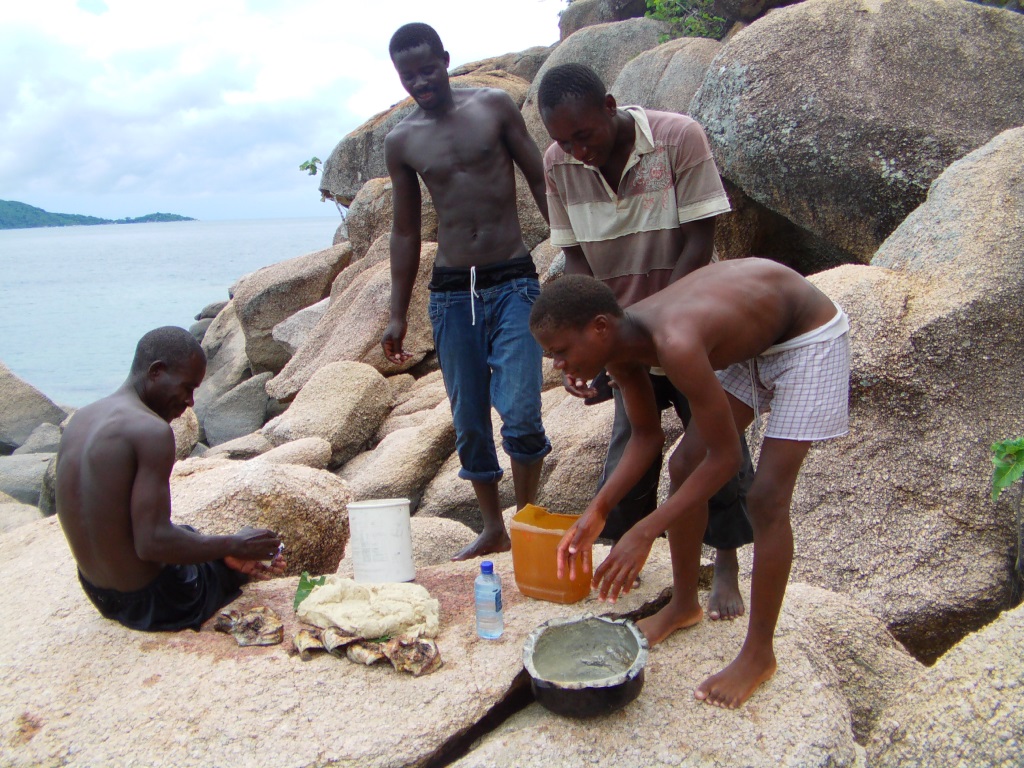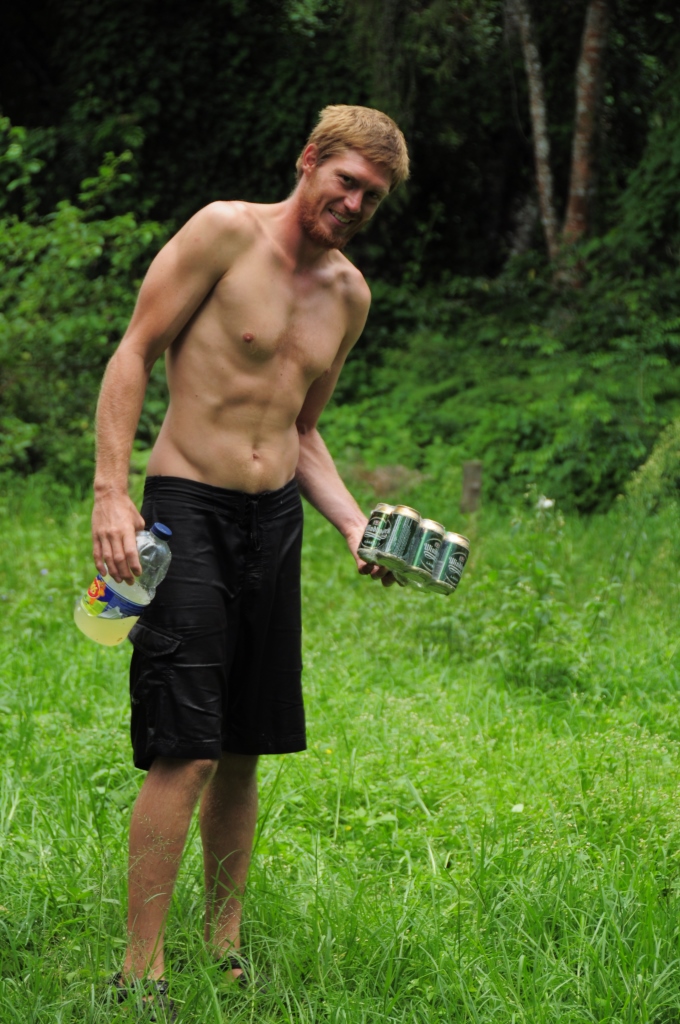Author: rabbitsv
Mango Drift
Likoma Island
Likoma Island is in Lake Malawi close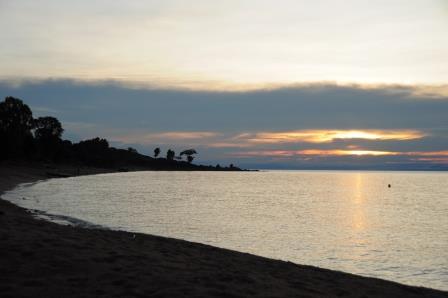 to the Mozambique side but part of Malawi. We took the Chambo ferry to the Island and stayed at Mango Drift Backpackers, which is a beach paradise.
to the Mozambique side but part of Malawi. We took the Chambo ferry to the Island and stayed at Mango Drift Backpackers, which is a beach paradise.
Astrid and I loved this place so much our three nights quickly turned into six. Especially since there was trouble with one of the Ferry’s which had to leave earlier than planned.
Like all great places it’s the people that make it a great place.
Mango’s Manager and Activities Organiser, Ben Spiessens can only be defined as unique. Always good for a laugh, Island style life suits him perfectly. After leaving Belgium at a young age he grew up in Sodwana. And basically grew up in the Ocean. He is an expert Spear Fisher and Free Diver.
Ben took me out for free Diving lessons. And the lessons were invaluable. I’ve been scuba diving now for more than ten years but have never free dived. Still Ben could teach me many basics like fluid dynamics or optimizing my equalization. The Islands calm waters also allow for a perfect learning playground as you slowly dive your way to about 15 – 20 m depth. Unfortunately I did have some trouble with my left eardrum so I couldn’t reach the deeper depths. But just watching Ben descend past 20m was amazing.
Ben is also a Padi Dive instructor and very passionate about his diving. This combined with his amazing teaching ability makes him and Likoma Island a great place to learn to dive!
Tipezananso (‘We see each other again’ in Chichewa) Cape Maclear
 Malawi is amongst the poorest nations in the world. We meet people trying to survive on a daily basis everywhere; whether it’s the lady selling woven mats, or the guys in Zomba transporting firewood off the plateau. As beautiful as the country is, life here is tough.
Malawi is amongst the poorest nations in the world. We meet people trying to survive on a daily basis everywhere; whether it’s the lady selling woven mats, or the guys in Zomba transporting firewood off the plateau. As beautiful as the country is, life here is tough.
Unfortunately it is often the children who suffer the most.
Tipezananso is a project created and funded by Gerrit von Engelen. It is a kindergarten and playground set in the small fishing village of Chembe, where toddlers and children can safely play on slides and swings, challenge each other in stimulating and informative games such as memory, bao and “Mensch Ärgere Dich Nicht” or learn through playing with building blocks. Stimulations that are often impossible to experience for a child growing up here.
Gerrit started the project because he had observed that the  children in Chembe had no alternative to watching the adult movies full of war, murder and violence. These adult movies are shown in local movie houses, with no regard to preventing children from entering and watching as well.
children in Chembe had no alternative to watching the adult movies full of war, murder and violence. These adult movies are shown in local movie houses, with no regard to preventing children from entering and watching as well.
Gerrit solved this problem by introducing a children’s movie night, with a different Disney movie being shown on a big screen under a baobab tree every Saturday night (an amazing setting). And so he managed to remove the children from the adult movie houses.
Over the next few years, he then proceeded to establish the kindergarten and the playground. The manager, Lingson, is proud of what has been achieved. Children now spend their days learning new skills and playing fun and educational games under the watchful guidance of Lingson, Mathilda, Stanley and Boyson. The basic skills learned are also beneficial to the community directly. For example the children learn not to litter, something that is sometimes taken for granted in African culture. Plastic is often just thrown into the streets. And
sometimes taken for granted in African culture. Plastic is often just thrown into the streets. And
Visiting the playground is wonderful. You join all the children playing games and having fun. But you probably won’t be able to beat them at a game of memory or bao. Amazing experiences are the movie nights, which now screen children’s movies on Tuesdays and Saturdays. You’ll experience anything from two to three hundred children applauding and cheering Rafiki’s arrival in the Lion king or Simba’s victory over Scar. Totally amazing!
Tipezananso is funded by the proceeds of Gerrit’s wine sales in the Dutch city of Eindhoven. He equipped both the kindergarten and the playground, and also supports the community with various projects. He has an annual “Drink for Africa” collection, which highlights Tipezananso and the work being done here to his client base.
Further details (in dutch) can be found on Gerrit’s website www.tipezananso.nl , or you can contact him directly via e-mail on gerritvanengelen@gmail.com.
Gerrit, Lingson and his team have built a very special place, something that is not often found in Africa! Congratulations and we wish you all the best for your future!
Domwe island
Sitting in the bay at 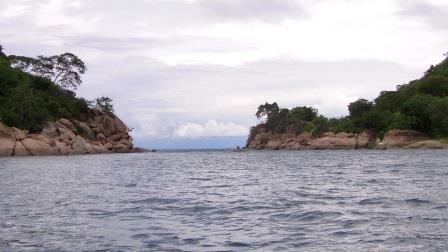 Cape MacClear two islands loom just in front of you. Domwe Island looked like you could reach it by crossing a 150m channel. This was too tempting an adventure to let go.
Cape MacClear two islands loom just in front of you. Domwe Island looked like you could reach it by crossing a 150m channel. This was too tempting an adventure to let go.
So on a pleasant morning I set off 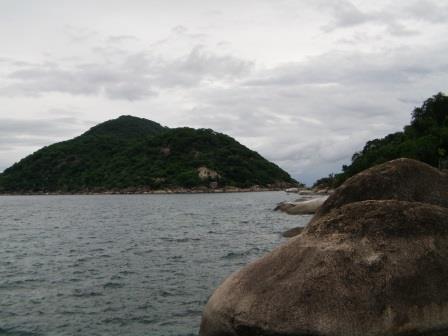 around the bay towards the channel between the mainland and Domwe. The first 30 min walk along the beach was easy, but then I ran into a boulder field that took me another 50 min of intense scrambling, climbing and jumping before reaching the channel.
around the bay towards the channel between the mainland and Domwe. The first 30 min walk along the beach was easy, but then I ran into a boulder field that took me another 50 min of intense scrambling, climbing and jumping before reaching the channel.
The channel had a strong current pulling through it and admittedly some slightly suspect reed beds. Suspect, as this is crocodile area. So I hunkered down for a little while to observe and check the water. I stuffed the few things I was carrying into a dry bag: camera, pocket knife, banana and granola bar and plunged in for the swim. There was a small outcropping in the middle of the channel and I was glad to reach it as the current was pulling me into out into the lake. There I quickly surveyed the crystal clear blue water around me and was back in it to cross the second length of water. Glad to have made it, I paused briefly on the other side to catch my breath.
I then started to make my way along the edge of this 3km long island, towards a ridge, so as to climb to the top of the island. While hopping from stone to stone along the bank, I met a really friendly fisherman called Green, who immediately confirmed my suspicions about the channel. He told me that it is an area where crocs irregularly appear. So now I really wasn’t keen on swimming back the way I had come. I immediately changed my plans to go to the top of the island and asked Green if they could ferry me back in one of their Bwatas (canoes). Green told me that he and the other fishermen had had a good catch that day and had just arrived on the island to have a late lunch of Nsima and Chambo (maize porridge and fish). And so he and his three other collages Dave, Isaac and Dickson invited me for lunch. 
Dave the senior in the group started the fire for the nsima while we grabbed some firewood for the fish. In the meantime Isaac was gutting and scaling the fish and then spicing it with some plain salt. He then proceeded to butterfly the fish on a stick and flame grill it in front of a very hot fire.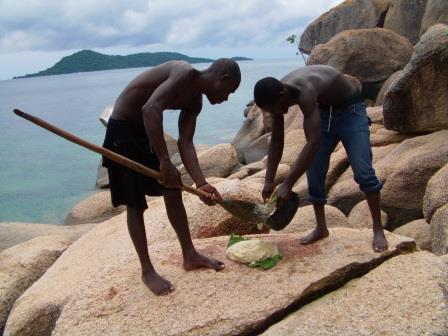
When the nsima was ready they poured it out onto two big leaves to cool. Shortly after, Isaac brought the Chambo.
Lunch was very simple, but absolutely delicious!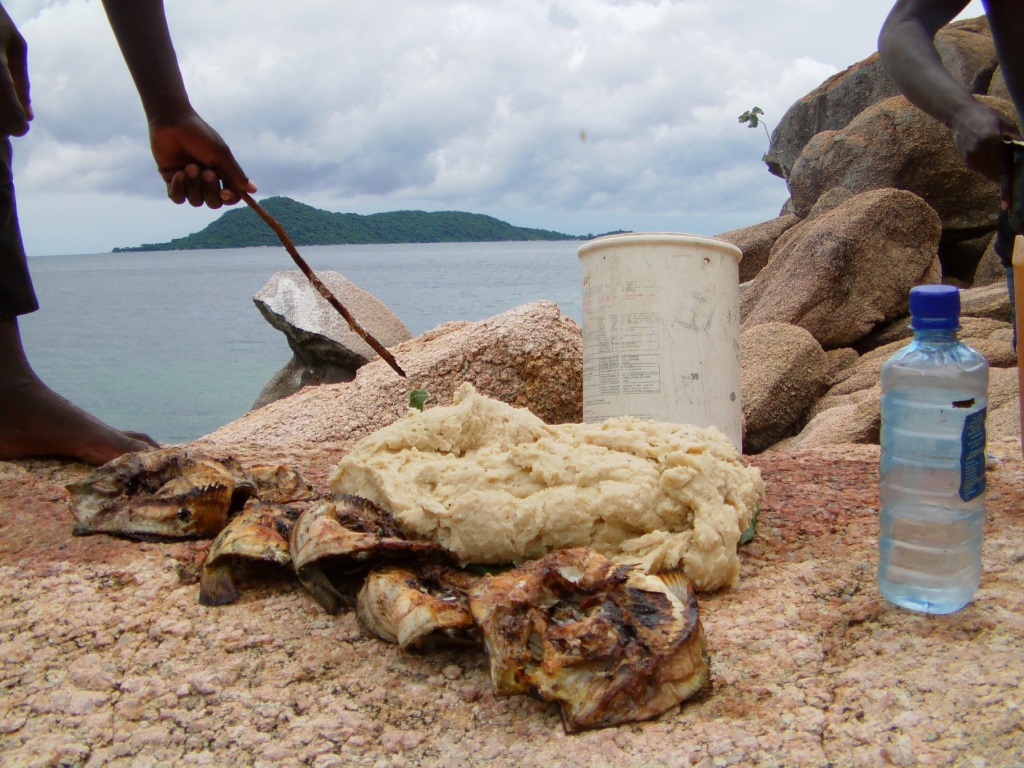
After lunch Green and Isaac took me into the middle of their Bwata and asked me to sit still while Dave and Dickson cruised alongside. The crossing back to Cape Maclear was swift and they dropped me on the beach.
While walking back I was thinking about how amazingly friendly they had been. First off for inviting me to an amazing lunch and then for taking me back to the main land and not asking or expecting any form of compensation in return.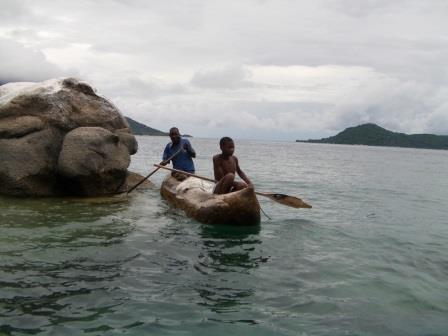
I did of course organise our fish from Green for the rest of our stay. J 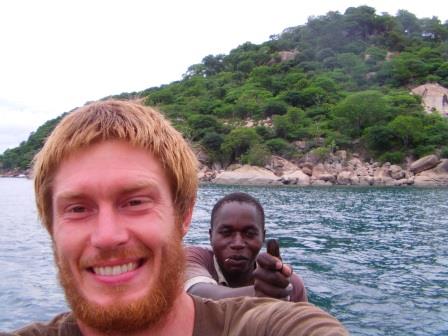
Missing beer on the Zomba Plateu
Our campsite at the Ku Chawe trout farm lay directly next to a mountain stream in the middle of a forest clearing. What better place to keep your drinks cools than in a cool mountain stream, especially as we needed to defrost and clean the fridge. I found a still spot in the water behind a large boulder and between some roots and here decided to keep a bottle of juice, 6 tonic waters for G&T’s and the last 6 of my Windhoek Lager beers.
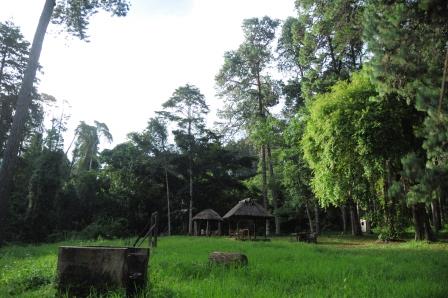 I was very aware of the fact that if the water should rise, that the stash would then be missing. And true to the rainy season, that night it stormed.
I was very aware of the fact that if the water should rise, that the stash would then be missing. And true to the rainy season, that night it stormed.
The next morning I went to check and only found the tonic water… So I began to wade downriver. Luckily this is something I enjoy doing. However, I do have to point out that it is very slippery, cold, overgrown with branches and thorn bushes and that there are many places for a six pack of beer to vanish to.
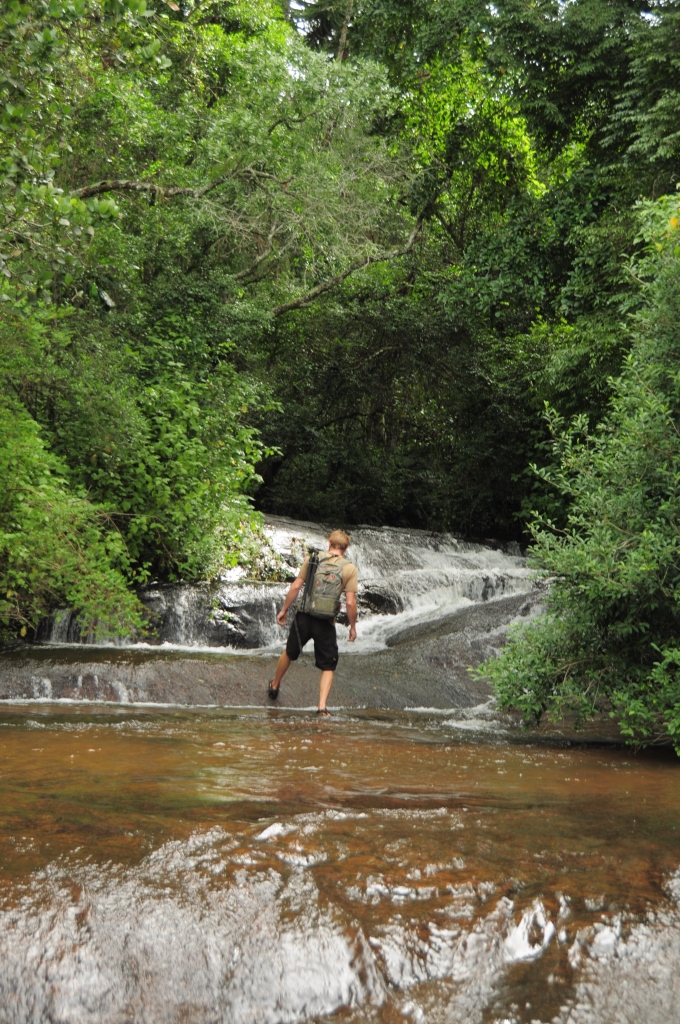 Nevertheless, I was determined and found the juice just 300m downstream, floating under a patch of brambles. My faith rekindled I continued downstream in hope of beer.
Nevertheless, I was determined and found the juice just 300m downstream, floating under a patch of brambles. My faith rekindled I continued downstream in hope of beer.
After about 45 min and 1.5km of slipping, sliding, tripping and swimming and just before calling the search off I spotted the promising sight of something green and sparkly. I couldn’t believe my luck to have found my last glorious Windhoek lagers wedged 20 cm underwater! Very lucky indeed!
So I turned around and headed back upstream, celebrating with a cool beer.
That afternoon, we removed all the drinks from the river before nightfall. 🙂
Hard work
Taking a drive around the plateau, we were  constantly confronted by guys taking fire wood down to Zomba town. Here they would sell the wood and earn money for food.
constantly confronted by guys taking fire wood down to Zomba town. Here they would sell the wood and earn money for food.
Their mode of transport for this was bicycles. They cycle up the plateau in the morning, chop the wood, pack it onto the bike and then make their way down again.
We met one guy along the way whose bike had broken, fully loaded. Chris helped him fix his bike and off he went again.
Ku Chawe trout farm and the Zomba plateau
The Zomba Plateau rises dramatically behind Malawi’s previous capital and is covered by lush forests and bubbling mountain streams. 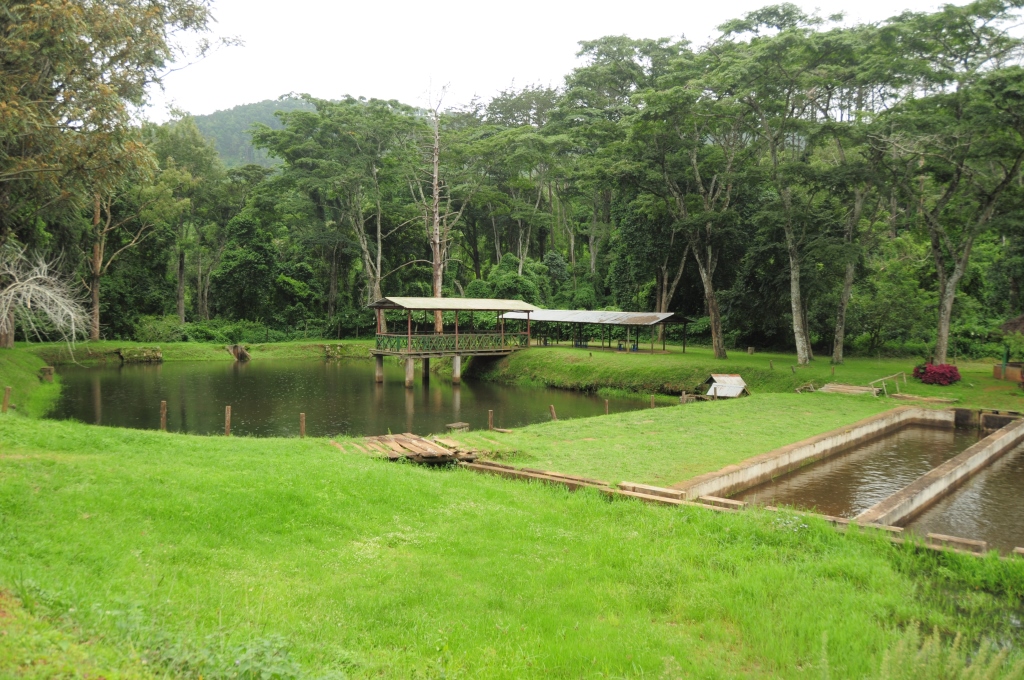
After our hiking on Mount Mulanje we opted for some serious R&R and decided to stay at the Ku Chawe trout farm on the plateau, the only trout farm in Malawi!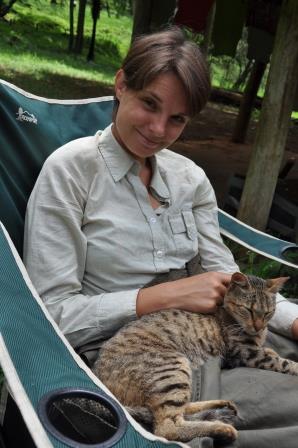
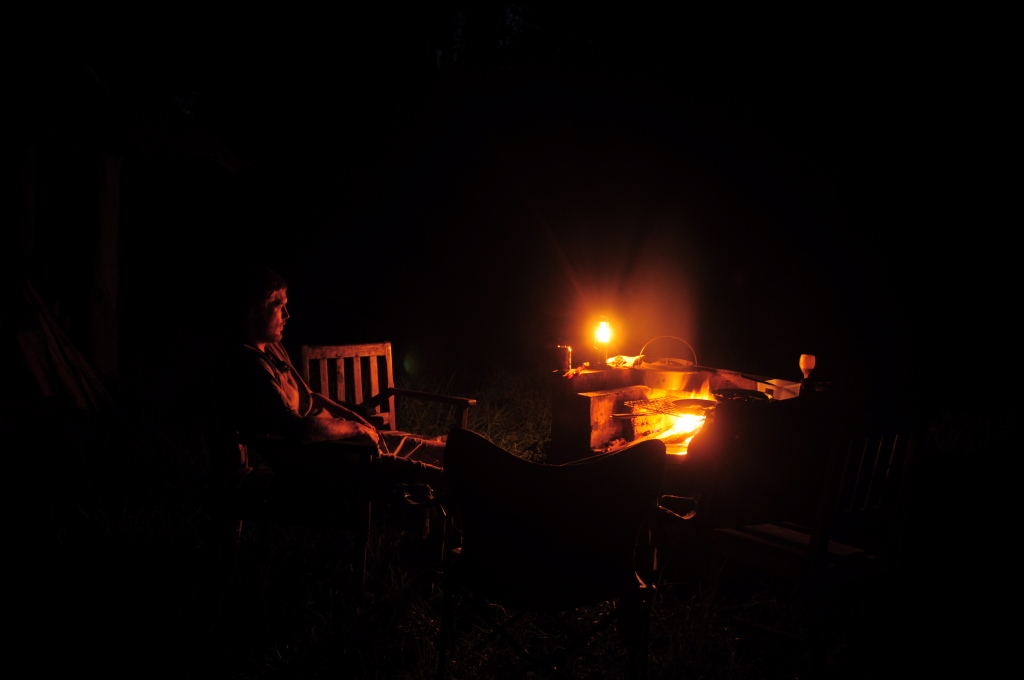
Unfortunately the previous owners had let the farm run down, including the small hotel and the camping area. With the new ownership things are changing and there are definite improvements already visible. New ablution blocks are being built, the hotel is to be renovated and a restaurant is to be set up. Even the two beautiful log cabins are to be reopened. Here we spent five days enjoying the richness of the beautiful area around us. The farm has huge potential and we wish the new owners all the best of luck!
Here we spent five days enjoying the richness of the beautiful area around us. The farm has huge potential and we wish the new owners all the best of luck!
For any more info on the farm please contact us.
Mount Mulanje
Mount Mulanje is Malawi’s highest mountain, with its highest peak, Sapitwa (meaning: don’t go there) reaching 3001 metres. 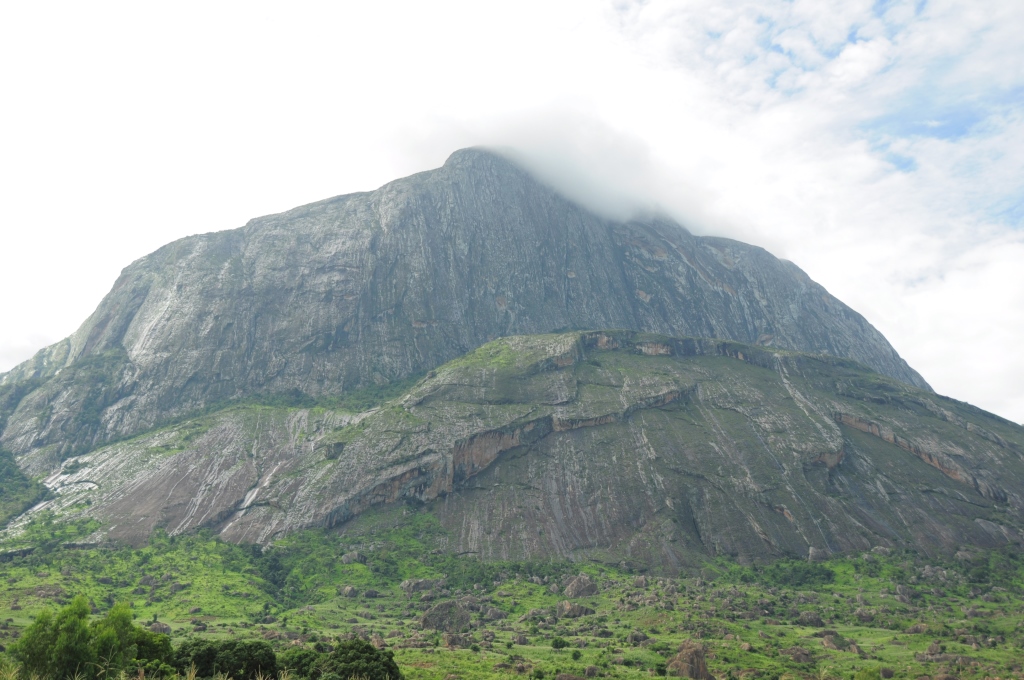 We’d always said that we would climb this mountain, as it is very beautiful and remote – perfect for us!
We’d always said that we would climb this mountain, as it is very beautiful and remote – perfect for us!
Having reached the Likhabula Forestry Office we soon met our guide Ramson and sorted out the route that we would be taking: First night at Chambe hut; ascend Sapitwa Peak the following morning; Thuchila hut on the second night; descend to Likhabula on the third day. 
At 05:30 the next morning we got up, made sure that we were packed and ready to go and met up with Ramson. The three of us headed up the very steep mountainside, enjoying the spectacular views, lush rainforest and beauty around us. Along the way Ramson told us all about the various fauna and flora surrounding us, giving us insight into both the local community, as well as the mountain itself.
The path was very slippery and following the trail required a lot of concentration. Unfortunately, Astrid’s foot started hurting and to top it all, it started raining as well.  Taking a breather at the halfway mark, Ramson decided to help Astrid by taking her pack. Even though this helped, it did not improve the pain in her foot, making us aware of an apparent chronic injury. Great!
Taking a breather at the halfway mark, Ramson decided to help Astrid by taking her pack. Even though this helped, it did not improve the pain in her foot, making us aware of an apparent chronic injury. Great!
Despite that, we made it to Chambe hut and were greatly impressed by what seemed to us an alpine chalet, which could have been taken from anywhere in the Alps. The caretaker had stoked a roaring fire in the cabin, allowing us to dry all our wet gear, play Bao with Ramson and generaly rest and recuperate in the warm and dry.  By late afternoon the rain had stopped, leaving behind mist covered views of Chambe Peak in front of us. What a wonderful setting!
By late afternoon the rain had stopped, leaving behind mist covered views of Chambe Peak in front of us. What a wonderful setting!
That afternoon we decided to change our plans and bypass summiting Sapitwa the next day. There was just too much cloud cover, the paths were too wet and slippery and the last stretch to the summit is an unsecured scramble over large boulders, not really worth it in the terrible weather we’d been having. So the decision was made to take an alternate route to the other side of Mulanje, namely to Lichenya hut.
Feeling much better in the morning, Astrid decided  to carry her pack again and we set off meandering across an amazing plateau. It was a strange setting to be in, with mountain peaks hidden in the mist, meadows covered in wild flowers, dense rain forests and fields of proteas scattered between it. It felt very mystical with the fog banks rolling over and obscuring everything, only allowing occasional glimpses of blue sky and sun. Definitely very dramatic!
to carry her pack again and we set off meandering across an amazing plateau. It was a strange setting to be in, with mountain peaks hidden in the mist, meadows covered in wild flowers, dense rain forests and fields of proteas scattered between it. It felt very mystical with the fog banks rolling over and obscuring everything, only allowing occasional glimpses of blue sky and sun. Definitely very dramatic!  Lichenya hut is situated in the middle of a pi
Lichenya hut is situated in the middle of a pi ne forest covered in Old Man’s Beard. Once again we were welcomed by a warm fire and had the lovely log cabin all to ourselves. We watched the rain and the Blue monkeys go by, thinking what a wonderful place we were in and how much we would enjoy coming back here with family and friends. We would sit around the fire at night, grilling marshmallows and chatting. Maybe some day we’ll have company and do just that. 🙂
ne forest covered in Old Man’s Beard. Once again we were welcomed by a warm fire and had the lovely log cabin all to ourselves. We watched the rain and the Blue monkeys go by, thinking what a wonderful place we were in and how much we would enjoy coming back here with family and friends. We would sit around the fire at night, grilling marshmallows and chatting. Maybe some day we’ll have company and do just that. 🙂
The following morning Astrid’s feet were still hurting, but we had no choice but to start down the mountain to Likhabula. The descent offered great views over the areas below Mulanje, allowing you to appreciate both the height and the steepness of the descent. In some places you really do not want to take a wrong step – if you do, you’ll have a long drop and a sudden stop at the end. 
By the time that we reached the car we were very relieved. Astrid could finally get off her feet, we could remain dry and we no longer had to pay attention to each step you took, in case you slip and fall. Over all we had an amazing time hiking on Mount Mulanje. We had been warned before coming that the conditions would not be ideal, but to us the rain and fog only enhanced the beauty and the mystique of the mountain. For everyone who enjoys hiking, Mount Mulanje is definitely a major highlight for anyone visiting Malawi.
During our time on the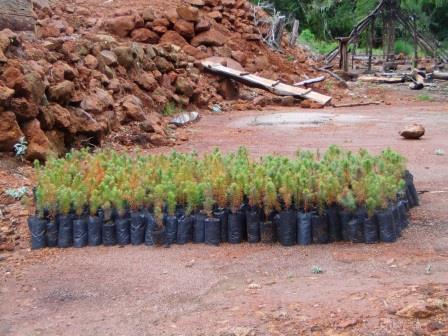 mountain we also came across Mulanje Cedar, which only grows on the mountain. It is highly prized for its rarity, as well as its value as a beautiful carving wood. Unfortunately, the Cedars are being illegally logged across the mountainside, but the authorities are introducing Cedar plantations to the lower slopes to prevent the poaching. All products of Mulanje Cedar from the Likhabula craft market are from the plantation and therefore legal. The crafters here are some of the best we have found so far, their work is very exact, creative and beautiful, so if you’re looking for a wonderfully carved Bao game, some jewellery or a perfectly fitted box, you can get it here at Malawian prices.
mountain we also came across Mulanje Cedar, which only grows on the mountain. It is highly prized for its rarity, as well as its value as a beautiful carving wood. Unfortunately, the Cedars are being illegally logged across the mountainside, but the authorities are introducing Cedar plantations to the lower slopes to prevent the poaching. All products of Mulanje Cedar from the Likhabula craft market are from the plantation and therefore legal. The crafters here are some of the best we have found so far, their work is very exact, creative and beautiful, so if you’re looking for a wonderfully carved Bao game, some jewellery or a perfectly fitted box, you can get it here at Malawian prices. 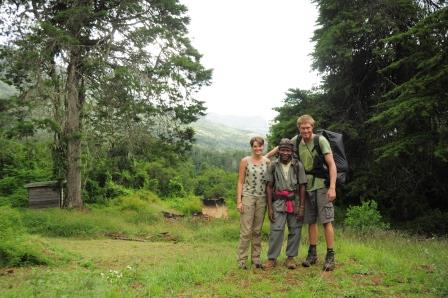
Blantyre shoe shopping
Blantyre was only a one night stopover. We stayed at Doogle’s, which was not what we were expecting, as it should have been the best camping around, but turned out to be nothing more than a glorified bar with dorm rooms.
The bar itself is very cool and here we met Andrew and Philip, with whom we had a great evening chatting away. Both are in the logistics business in Blantyre and we soon found lots of common ground to discuss.
Astrid at some point indicated her need to buy some shoes and Andrew and Philip immediately suggested that they would take us to the best shoe shopping around. So after a number of beers, we agreed to meet the next morning to do some shopping in the market of Limbe.
At 09:00 AM, Andrew and Philip picked us up and we headed off. After parking the car, we found that the bottom end of the market consisted of shoes. In all shapes and sizes, in any colour imaginable. Stallholder after stallholder showed us their footwear, but Astrid couldn’t find anything.
Amongst the huge selection Astrid finally found a great pair of Birkenstock and after some haggling, settled on a fair price.
All the while we enjoyed the intense market atmosphere around us. Goods were being hawked and bartered all around us and despite the seeming chaos, the market was very structured and well run. Beyond shoes, you could find haberdashery, materials and seamstresses, electronics, tools, clothing, vegetables and fruit, and a whole section for automotive spare parts.
What was great about this market was that it had a very large selection of goods and we didn’t get treated like tourists, without extortionate prices, constant harassment etc. It was very liberating to just do what you came for, and not end up being “chased” out.
However, it wasn’t all good news. Astrid had set out to get two pairs of shoes but despite the huge selection, she could only find one pair. So with all of us fed up with looking at shoes, Andrew and Philip took us back to Doogle’s showing us Limbe in the process and introducing us to all the local police officers at the road blocks. 🙂
Thank you again to both Andrew and Philip for an amazing time! And yes, Astrid is still looking for the second pair of shoes… 🙂
South Luangwa
Even though we had 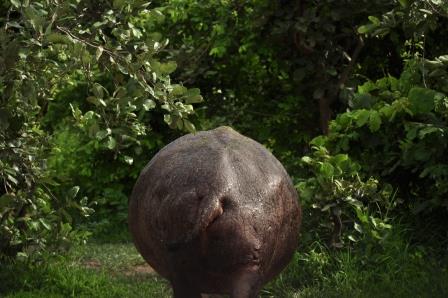 always known that we would not be spending vast amounts of time in Zambia, we also knew that we would definitely go to see South Luangwa National Park.
always known that we would not be spending vast amounts of time in Zambia, we also knew that we would definitely go to see South Luangwa National Park.
Before we even got to Wildlife Camp, which was to be our home for the next few days, we 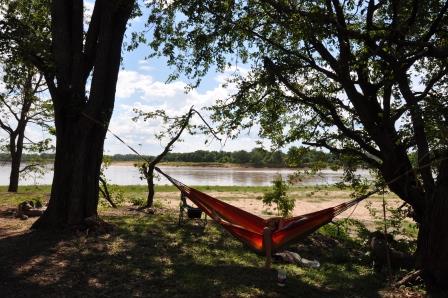 were treated to a herd of elephants busily browsing the Mopani Forest.
were treated to a herd of elephants busily browsing the Mopani Forest.
Wildlife Camp is situated on the banks of the Luangwa River, directly across the Reserve. As there is no fence either around the Reserve or the Camp, all animals are free to roam as and when they 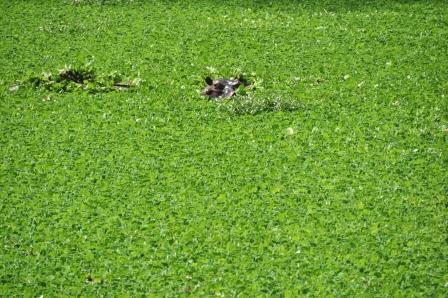 choose.
choose.
This proved to be very cool indeed, as hippos were happily roaming through camp during the day and were replaced by elephants both young and old at night. We even had the elephant herd ‘s matriarch and calf silently pass not two meters 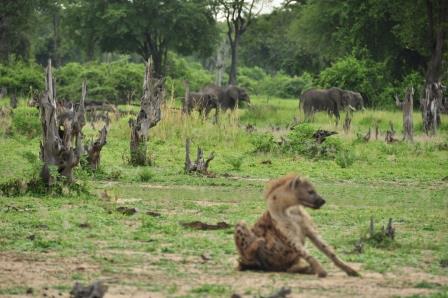
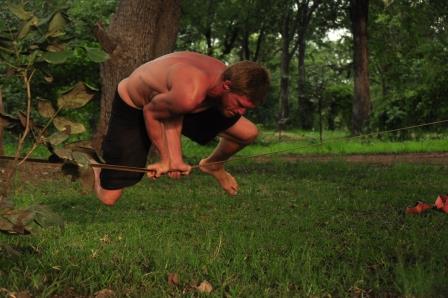
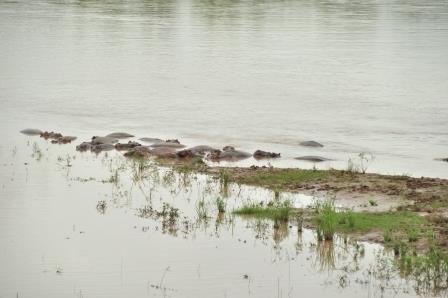
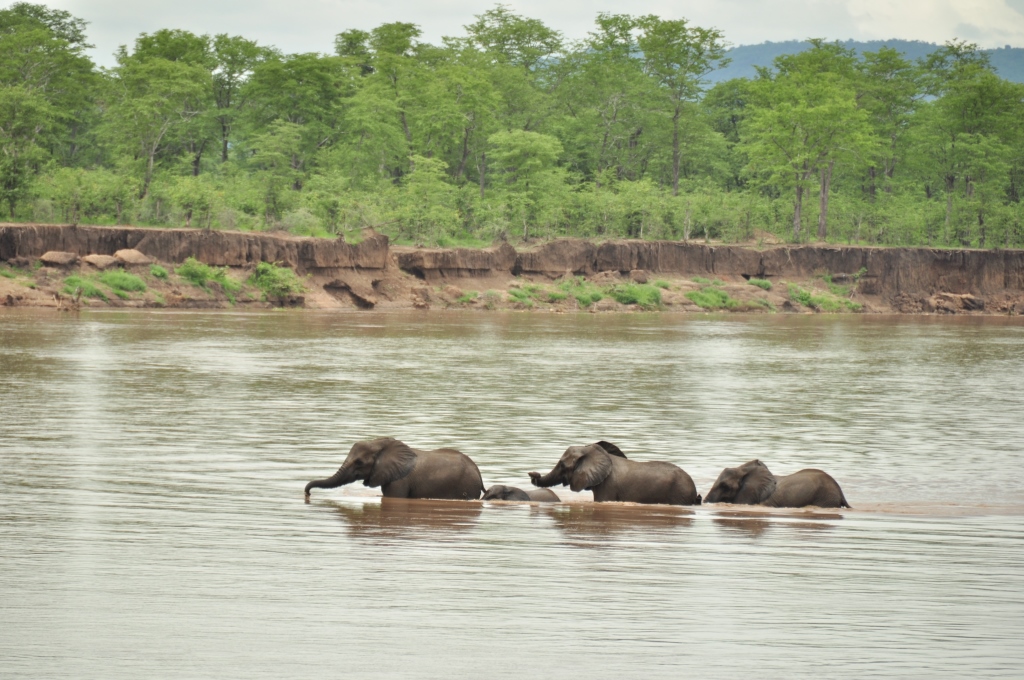
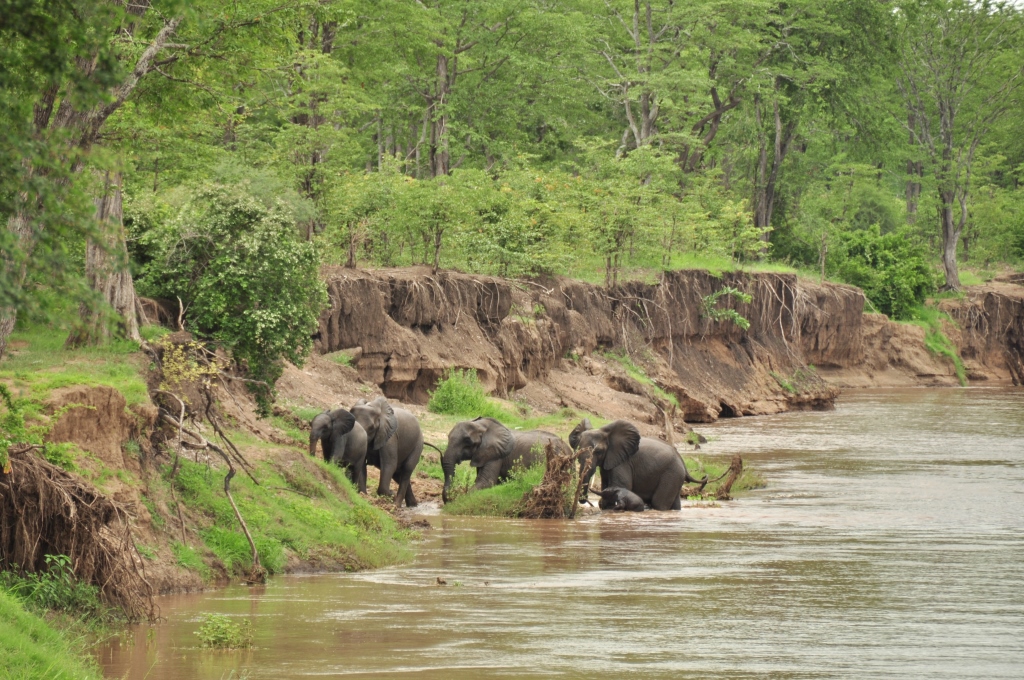 from the car in the middle of the night. Needless to say, midnight trips to the bathroom were not undertaken lightly and when Chris “stumbled” across the matriarch and the calves, he had to detour to keep the car between himself and the ellies!
from the car in the middle of the night. Needless to say, midnight trips to the bathroom were not undertaken lightly and when Chris “stumbled” across the matriarch and the calves, he had to detour to keep the car between himself and the ellies!
As the Luangwa boasts over 40 000 hippos it’s not surprising that we spent our days watching them from the pool overlooking the river, as well as racking up our bird count.
Having spent a wonderful few days getting our wildlife cravings satisfied, we were to have one more bonus: we had the opportunity to watch a group of three ellies shepherding their very young calves across the river right in front of us. What an experience!



